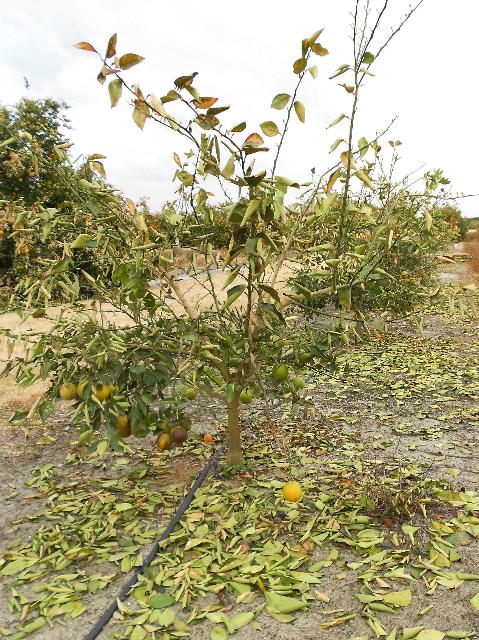Southeast citrus trees were undoubtedly impacted by multiple days of sub-freezing temperatures during Christmas week. An exact understanding of the impact will not be known for another couple of months, believes Jonathan Oliver, University of Georgia (UGA) assistant professor and small fruits pathologist.

(Photo by Mongi Zekri, University of Florida Institute of Food and Agricultural Sciences)
“The freeze was significant, but you never really know for sure until the plants start to flush out new growth. Sometimes the trees can look pretty bad but actually don’t flush out new growth. The leaves that they carried over the winter that fell off after the freeze aren’t necessarily that important to the life of the tree. The tree can recover from that,” Oliver said. “But until we get into full spring flush, we won’t really know what was damaged severely; what limbs actually need to be cut off because they were killed back or what trees we lost.
“I can say from personal experience, some of the trees I looked at in my own yard and on campus at UGA Tifton, a lot of those trees have recovered better than I thought. We were seeing some flush on most all of the major limbs. They probably survived the freeze in those cases, but definitely since we had such sustained cold temperatures for such a long period, we probably had some citrus trees that were killed or are going to die back significantly. I’m guessing we won’t really know until March or April when they really start to flush out to know what really got hurt and what didn’t.”
Most of the citrus produced in the Cold Hardy Citrus Association, which includes producers in North Florida, South Georgia and South Alabama, consists of satsuma mandarins, but growers have diversified in recent years. Unfortunately, the non-satsuma varieties were the most susceptible to the cold temperatures.
“Satsumas are definitely the most cold-hardy type of citrus. From what I’ve seen, most of the satsumas are doing better than a lemon tree or grapefruit tree,” Oliver said.
He estimated that 92% of citrus produced in the cold-hardy region was satsumas five years ago. That number has since dropped to about 75%.
ABOUT THE AUTHOR










